Description
Iron Supreme – Advanced Ferrous Bisglycinate Chelate Iron Optimization System
The Treatment Compliance Crisis in Iron Supplementation
When we started working with patients who had documented iron deficiency, we encountered a problem that completely undermined treatment success: standard iron supplements were so poorly tolerated that most people couldn't take them long enough to correct their deficiency.
The statistics were sobering. Research shows that 40-70% of people taking conventional iron supplements (ferrous sulfate, ferrous fumarate) experience significant gastrointestinal side effects—nausea, stomach pain, constipation, diarrhea, metallic taste. More concerning, compliance rates drop to 30% or below at six months, meaning seven out of ten people with iron deficiency never actually resolve it because they discontinue treatment due to side effects.
We'd see the same scenario repeatedly: a patient would come in with fatigue, low ferritin, struggling with iron deficiency anemia. Their physician would prescribe ferrous sulfate—the standard, inexpensive iron supplement. Two weeks later, they'd report feeling worse than before starting treatment. “The iron makes me so nauseous I can barely eat. I'm constipated for the first time in my life. The metallic taste is constant. Is this really worth it?”
The frustration wasn't just the patients'—it was ours as practitioners. We knew that correcting iron deficiency would dramatically improve their energy, cognitive function, and overall wellbeing. We knew that adequate iron was essential for oxygen transport, cellular energy production, immune function, and dozens of other critical processes. But what good is that knowledge when the treatment itself is so intolerable that people can't take it?
This led us to research why standard iron supplements cause such severe problems and whether better alternatives existed. What we discovered changed how we approach iron supplementation entirely: the form of iron matters profoundly—not just for absorption, but for tolerability, safety, and whether patients will actually maintain treatment long enough to resolve their deficiency.
Iron Supreme represents the solution to this iron treatment compliance crisis: an Advanced Ferrous Bisglycinate Chelate Iron Optimization System utilizing patented Ferrochel® iron from Albion Laboratories—the only fully-reacted, amino acid chelated iron with clinical documentation of superior bioavailability, exceptional gastrointestinal tolerance, and intelligent absorption regulation that prevents toxicity.
Why Standard Iron Supplements Fail
Most iron supplements use cheap inorganic iron salts—ferrous sulfate, ferrous fumarate, ferrous gluconate—that cause notorious problems limiting their effectiveness. This outdated approach fails to address four critical realities of iron supplementation:
The Gastrointestinal Tolerance Crisis: Inorganic iron salts cause severe gastrointestinal side effects in 40-70% of users: nausea, stomach pain, constipation, diarrhea, and metallic taste. These effects occur because inorganic iron irritates the gastric and intestinal lining, generates free radicals in the gut, and disrupts the intestinal microbiome. The result: patient compliance rates of only 30% or less at six months, meaning most people with iron deficiency never actually correct it because they can't tolerate the treatment.
The Absorption Variability Problem: Inorganic iron absorption is dramatically affected by stomach acid pH, presence of food (particularly calcium, tannins from tea/coffee, phytates from grains), and competition with other minerals. Absorption rates vary wildly from 2-20% depending on these factors, making dosing unpredictable. Additionally, iron absorption decreases as iron status improves, but with inorganic forms this regulatory mechanism is easily overwhelmed, creating risk of iron overload.
The Pro-Oxidant Toxicity Risk: Inorganic iron acts as a pro-oxidant, catalyzing formation of hydroxyl radicals through Fenton chemistry. This oxidative stress damages intestinal cells, depletes antioxidant systems, and can oxidize lipids and proteins throughout the body. Free ionic iron is particularly problematic—it's not safely bound and can generate oxidative damage at cellular and tissue levels.
The Nutrient Interaction Problem: Inorganic iron competes with absorption of other essential minerals (calcium, zinc, copper, magnesium) and can interfere with absorption of vitamin E and other nutrients. This creates a situation where correcting iron deficiency may inadvertently cause deficiencies in other nutrients, particularly problematic for individuals already at nutritional risk.
The Iron Supreme Bisglycinate Chelate Strategy
Iron Supreme implements a sophisticated four-phase optimization approach utilizing patented Albion® Ferrochel® technology that fundamentally transforms iron supplementation:
Phase 1: Fully-Reacted Amino Acid Chelation – Ferrous bisglycinate is 100% fully-reacted chelate where each iron molecule is bound to two glycine molecules in a stable, electrically neutral complex, preventing the free ionic iron that causes gastrointestinal irritation and oxidative stress while ensuring the iron remains bioavailable for absorption.
Phase 2: pH-Independent Stability and Transport – The bisglycinate chelate structure remains stable and soluble across pH ranges from 2-6, allowing the iron to pass unchanged through the acidic stomach without degradation or interaction with food components, then travel to the small intestine where it's absorbed via specific peptide transporters rather than competing mineral ion channels.
Phase 3: Intelligent Absorption Regulation – Research demonstrates that iron bisglycinate absorption is inversely correlated with serum ferritin levels (r = -0.60, p < 0.03), meaning the body automatically increases absorption when iron stores are low and decreases absorption when stores are adequate, providing built-in protection against iron overload while ensuring efficient correction of deficiency.
Phase 4: Synergistic Glycine Utilization – The glycine component of the chelate serves double duty: not only does it create the stable chelate structure for optimal iron delivery, but glycine itself is one of the two starting materials the body uses to synthesize hemoglobin (along with succinyl-CoA), making ferrous bisglycinate a delivery system that provides both iron and a hemoglobin building block simultaneously.
The Science Behind Advanced Iron Chelation
Understanding Amino Acid Chelation Technology
The term “chelate” comes from the Greek word for “claw,” describing how the amino acid molecules grasp and hold the mineral in a stable ring structure. However, not all chelates are created equal—many products claiming to be “chelated” are actually just mixtures of minerals and amino acids that haven't fully reacted, providing minimal benefit over standard mineral salts.
True ferrous bisglycinate chelate is different: it's a fully-reacted chelate where each ferrous iron (Fe²⁺) molecule is covalently bonded to two glycine molecules, creating a stable, electrically neutral complex with a specific molecular structure. This complete chelation provides several crucial advantages:
Electrical Neutrality: Unlike ionic iron (Fe²⁺ or Fe³⁺) which carries an electrical charge, fully-reacted bisglycinate chelate is electrically neutral. This neutrality means it doesn't interact electrostatically with other charged molecules in the digestive system—it won't bind to phytates, tannins, calcium, or other dietary inhibitors of iron absorption. This is why chelated iron bisglycinate can be taken with or without food with minimal impact on absorption, unlike inorganic iron which must be taken on an empty stomach for optimal absorption (which further worsens gastrointestinal side effects).
pH Stability: Research demonstrates that iron bisglycinate chelate solubility remains constant across pH ranges from 2 (strongly acidic, like stomach acid) to 6 (slightly acidic, like the small intestine). This pH-independent stability means the chelate structure remains intact as it travels from stomach to intestine, protecting the iron from degradation and preventing the formation of insoluble iron complexes that plague inorganic iron supplements. Standard ferrous sulfate, in contrast, can precipitate out of solution at higher pH levels, dramatically reducing absorption.
Peptide Transporter Absorption: The bisglycinate chelate structure is recognized by peptide transporters in the intestinal wall—the same transporters that absorb small proteins and amino acids. This allows chelated iron to bypass the competitive mineral ion transporters (DMT1) that inorganic iron must use, which are easily saturated and where different minerals compete for absorption. Using the peptide transport pathway explains the superior bioavailability even when taken with food or other minerals.
Clinical Evidence for Superior Bioavailability
Multiple published studies document iron bisglycinate chelate's superior absorption and efficacy compared to standard iron forms:
Pregnancy Study: A clinical trial with 145 pregnant women compared iron bisglycinate chelate (25 mg elemental iron daily) to ferrous sulfate (50 mg elemental iron daily). Despite receiving half the iron dose, the bisglycinate group showed significantly greater increases in hemoglobin and ferritin levels. Additionally, 29.8% of women taking ferrous sulfate complained about metallic taste, while 0% of women taking bisglycinate chelate had taste complaints. Gastrointestinal side effects were also dramatically lower in the bisglycinate group.
Absorption Correlation Study: Published research demonstrated a significant inverse correlation (r = -0.60, p < 0.03) between iron bisglycinate chelate absorption and serum ferritin levels. This means individuals with low iron stores (low ferritin) absorbed more iron from the supplement, while those with adequate stores absorbed less. This intelligent, self-regulating absorption pattern provides protection against iron overload—a critical safety feature lacking in inorganic iron supplements where absorption continues regardless of iron status.
Bioavailability Comparison: Studies using stable iron isotopes and sophisticated measurement techniques have documented that iron bisglycinate chelate bioavailability can be 2-4 times higher than ferrous sulfate under typical dietary conditions, and the relative advantage increases even further when taken with food or other minerals that inhibit inorganic iron absorption.
The Gastrointestinal Tolerance Advantage
The superior tolerability of iron bisglycinate chelate compared to inorganic iron represents perhaps its most clinically significant benefit, directly addressing the primary reason iron supplementation fails—patients simply can't tolerate standard iron and discontinue use.
Reduced Oxidative Stress: Inorganic iron generates free radicals in the gastrointestinal tract through Fenton chemistry: Fe²⁺ + H₂O₂ → Fe³⁺ + OH• + OH⁻. The hydroxyl radical (OH•) is one of the most reactive oxygen species, causing lipid peroxidation, protein damage, and DNA oxidation in intestinal cells. The stable chelate structure prevents this free radical generation because the iron is securely bound to glycine and unavailable for Fenton chemistry until it's absorbed and properly incorporated into iron-containing proteins.
Minimal Gastric Irritation: The pH stability and electrical neutrality of iron bisglycinate chelate mean it doesn't irritate the gastric mucosa the way ionic iron does. Inorganic iron can directly damage the protective mucus layer of the stomach and cause inflammatory responses. Chelated iron passes through the stomach unchanged, causing minimal contact irritation.
Preserved Microbiome Health: Emerging research suggests that inorganic iron supplementation can disrupt the intestinal microbiome by providing available iron that promotes growth of pathogenic bacteria while inhibiting beneficial species. The chelated structure makes iron less available to gut bacteria, potentially preserving healthier microbiome balance during supplementation.
Clinical Tolerability Data: Multiple studies document dramatically lower rates of nausea, constipation, diarrhea, and metallic taste with iron bisglycinate chelate compared to ferrous sulfate and other inorganic forms. Compliance rates exceed 90% with chelated iron in clinical trials—a stark contrast to the 30% or lower compliance seen with standard iron supplements.
The Hemoglobin Synthesis Synergy
An elegant aspect of ferrous bisglycinate's design involves the glycine component. Hemoglobin synthesis requires several key ingredients: iron (for the heme group), glycine (as one of the starting materials for porphyrin ring synthesis), and succinyl-CoA (from the citric acid cycle). By providing iron chelated to glycine, this form delivers two of these essential components simultaneously.
The body synthesizes the porphyrin ring of heme through a multi-step pathway beginning with the condensation of glycine and succinyl-CoA to form δ-aminolevulinic acid (ALA). This makes glycine availability important for optimal heme and hemoglobin production. While the body can synthesize glycine, providing it exogenously alongside iron may support more efficient hemoglobin synthesis, particularly in individuals with iron deficiency anemia who need to rapidly restore red blood cell production.
Iron's Essential Physiological Roles
Iron serves as an essential component of multiple critical proteins and enzymes throughout the body:
Hemoglobin: The oxygen-carrying protein in red blood cells contains four iron atoms (in heme groups) that reversibly bind oxygen molecules, enabling oxygen transport from lungs to tissues. Iron deficiency impairs hemoglobin synthesis, leading to microcytic anemia, fatigue, weakness, and reduced oxygen delivery to all organs.
Myoglobin: Similar to hemoglobin, myoglobin contains iron-heme groups that bind and store oxygen in muscle tissue, ensuring adequate oxygen availability for muscle contraction. Iron deficiency reduces myoglobin levels, contributing to muscle weakness and reduced exercise capacity.
Ferritin: The body's primary iron storage protein, ferritin safely sequesters iron in a bioavailable form throughout the body, particularly in liver, spleen, and bone marrow. Adequate ferritin stores ensure iron availability for red blood cell production and other needs without allowing free iron to cause oxidative damage.
Cytochromes and Electron Transport: Iron-containing cytochrome proteins in mitochondria are essential for cellular energy production through the electron transport chain. Iron deficiency impairs ATP synthesis, contributing to the profound fatigue characteristic of iron deficiency even before anemia develops.
Iron-Dependent Enzymes: Numerous enzymes require iron as a cofactor, including those involved in DNA synthesis, neurotransmitter production, collagen synthesis, and immune function. Iron deficiency affects these diverse pathways, explaining the wide-ranging symptoms beyond just anemia.
The Complete Iron Optimization Protocol
Daily Use Guidelines
Standard Protocol: Take one capsule daily (providing 29 mg elemental iron as ferrous bisglycinate chelate), or as directed by your healthcare professional.
Timing Flexibility: Due to chelated iron's superior absorption characteristics and minimal food interactions, Iron Supreme can be taken with or without food based on personal preference. Taking with food may enhance tolerability for sensitive individuals, while taking on an empty stomach may provide slightly faster absorption—but unlike inorganic iron, both approaches work well.
Optimal Timing Suggestions:
- With breakfast: Convenient for daily routine and provides iron for daytime energy needs
- With dinner: May reduce any residual gastric awareness in sensitive individuals
- Between meals: Maximizes absorption speed, though chelated iron's advantage over inorganic iron is less pronounced than with standard forms
Who Benefits Most from Iron Supreme
Menstruating women: Monthly blood loss creates ongoing iron requirements that dietary intake often fails to meet, particularly for women with heavy menstrual bleeding. Regular iron supplementation helps maintain adequate iron stores and prevent deficiency.
Pregnant and lactating women: Iron requirements increase substantially during pregnancy (to support expanding blood volume and fetal development) and lactation. While prenatal vitamins provide some iron, many women need additional supplementation to maintain optimal ferritin levels.
Athletes and active individuals: Exercise increases iron requirements through multiple mechanisms: increased red blood cell production for oxygen delivery, iron loss through sweat, and foot-strike hemolysis in runners. Athletes, particularly female athletes and endurance athletes, commonly develop iron deficiency.
Vegetarians and vegans: Plant-based diets provide only non-heme iron (from legumes, grains, vegetables) which has lower bioavailability than heme iron from meat. Vegetarians and vegans often require supplementation to maintain optimal iron status.
Individuals with diagnosed iron deficiency: Anyone with documented low iron stores (low ferritin), iron deficiency anemia (low hemoglobin/hematocrit), or symptomatic iron deficiency (fatigue, weakness, pale skin, shortness of breath) benefits from therapeutic iron supplementation under healthcare provider guidance.
People with conditions affecting iron absorption: Celiac disease, inflammatory bowel disease, H. pylori infection, and bariatric surgery can all impair iron absorption. Chelated iron's superior bioavailability makes it particularly appropriate for these individuals.
Those who couldn't tolerate standard iron: Individuals who experienced severe gastrointestinal side effects from ferrous sulfate or other inorganic iron forms often tolerate chelated iron well, finally enabling them to correct their deficiency.
Monitoring and Duration
Initial Supplementation Phase: Most individuals with documented iron deficiency require 3-6 months of daily supplementation to replete iron stores (normalize ferritin levels) and correct anemia (normalize hemoglobin/hematocrit). Ferritin typically responds more slowly than hemoglobin, so continue supplementation until ferritin reaches optimal levels (typically 50-100 ng/mL), not just until anemia resolves.
Follow-Up Testing: Work with your healthcare provider to monitor iron status through periodic blood tests (complete blood count, serum ferritin, and potentially serum iron/TIBC/transferrin saturation). Testing every 2-3 months during initial treatment allows assessment of response and adjustment of dosing if needed.
Maintenance Phase: Once iron stores are replete, many individuals can reduce to every-other-day dosing or discontinue supplementation if dietary iron intake is adequate. However, women with heavy menstrual bleeding, pregnant/lactating women, and others with ongoing increased requirements may need continued daily or alternate-day supplementation.
Complementary Strategies for Iron Optimization
Vitamin C Enhancement: While chelated iron doesn't require vitamin C for absorption the way inorganic iron does, vitamin C still supports iron metabolism and can be taken alongside Iron Supreme. Vitamin C helps reduce ferric iron (Fe³⁺) to ferrous iron (Fe²⁺), supports iron transport proteins, and enhances overall iron utilization.
Dietary Iron Sources: Supplement Iron Supreme with iron-rich foods: red meat, poultry, fish (heme iron sources with high bioavailability), as well as legumes, fortified grains, dark leafy greens, and dried fruits (non-heme sources). Combining heme and non-heme sources optimizes dietary iron intake.
Avoid Iron Inhibitors Near Dosing: While chelated iron's absorption is less affected than inorganic iron, for maximum absorption avoid consuming large amounts of calcium, coffee, tea, or high-dose zinc supplements at the exact same time as Iron Supreme. A 1-2 hour separation is sufficient.
Address Underlying Causes: If iron deficiency is due to blood loss (heavy menstrual bleeding, gastrointestinal bleeding), malabsorption (celiac disease, inflammatory bowel disease), or other underlying conditions, work with your healthcare provider to address these root causes alongside supplementation.
Why Iron Supreme Represents a Superior Approach
Patented Chelation Technology: Uses genuine Albion Laboratories® Ferrochel® ferrous bisglycinate chelate—the only fully-reacted, clinically studied iron chelate with documented superior bioavailability and tolerance. Not a generic “iron bisglycinate” of uncertain quality, but the gold-standard patented form.
Exceptional Gastrointestinal Tolerance: Clinical studies document dramatically reduced side effects compared to ferrous sulfate and other inorganic forms, with compliance rates exceeding 90%—enabling patients to actually complete their iron supplementation protocol rather than discontinuing due to intolerance.
Intelligent Absorption Regulation: The inverse correlation between chelated iron absorption and ferritin levels means the body automatically adjusts iron uptake based on need, providing built-in protection against iron overload while ensuring efficient correction of deficiency.
Non-Pro-Oxidant Safety Profile: The stable chelate structure prevents the free radical generation and oxidative stress caused by inorganic iron, protecting gastrointestinal tissues, preserving antioxidant status, and minimizing potential pro-oxidant effects throughout the body.
Minimal Nutrient Interactions: The electrically neutral, pH-stable chelate structure means Iron Supreme doesn't compete with absorption of calcium, zinc, vitamin E, or other nutrients the way ionic iron does, allowing for flexible timing and concurrent use with other supplements.
Professional-Grade Quality: Manufactured to pharmaceutical standards with rigorous quality control, ensuring consistent potency, purity, and the genuine chelated iron form that clinical studies are based on—not inferior substitutes or incompletely chelated mixtures.
Frequently Asked Questions
Q: How is Iron Supreme different from the ferrous sulfate my doctor prescribed?
Ferrous sulfate is an inorganic iron salt that causes notorious gastrointestinal side effects (nausea, constipation, stomach pain) in 40-70% of users, leading to very poor compliance. Iron Supreme uses ferrous bisglycinate chelate—a patented amino acid chelate form with 2-4 times better absorption and dramatically superior tolerance. Clinical studies show 0% taste complaints and minimal GI side effects with chelated iron compared to 30%+ complaint rates with ferrous sulfate.
Q: Can I take Iron Supreme with food, or does it need to be on an empty stomach?
Unlike inorganic iron which should be taken on an empty stomach for best absorption (worsening side effects), chelated iron's stable structure and peptide transporter absorption pathway mean it can be taken with or without food with minimal impact on absorption. Take it whenever is most convenient and comfortable for you.
Q: How long before my iron levels improve?
Hemoglobin typically begins improving within 2-4 weeks of starting supplementation, with most individuals seeing normalization of anemia within 2-3 months. However, ferritin (iron stores) responds more slowly, often requiring 3-6 months to optimize. Continue supplementation until ferritin reaches healthy levels (typically 50-100 ng/mL), not just until anemia resolves.
Q: Is there any risk of iron overload from Iron Supreme?
Research demonstrates that chelated iron absorption is inversely correlated with serum ferritin—meaning your body automatically absorbs more when iron stores are low and less when stores are adequate. This intelligent regulation provides protection against overload. However, individuals with hemochromatosis or other iron overload disorders should not take iron supplements without specific medical supervision.
Q: Why does Iron Supreme not contain vitamin C like some iron supplements?
While vitamin C enhances absorption of inorganic iron (by reducing Fe³⁺ to Fe²⁺ and preventing precipitation), chelated iron doesn't require vitamin C for optimal absorption due to its stable chelate structure and peptide transporter pathway. You can certainly take vitamin C alongside Iron Supreme if desired for its other benefits, but it's not necessary for iron absorption.
Q: Can I take Iron Supreme if I'm pregnant?
Pregnant women have significantly increased iron requirements to support expanding blood volume and fetal development. Iron Supreme's superior tolerability makes it particularly appropriate for pregnancy when nausea is already problematic. However, always consult your healthcare provider before starting any supplement during pregnancy to ensure appropriate dosing based on your individual iron status and needs.
Supplement Facts
Serving Size: 1 Capsule
Servings Per Container: 120
Proprietary Iron Chelate Complex
| Ingredient | Amount Per Serving |
|---|---|
| Proprietary Iron Bisglycinate Chelate Complex | 145 mg ✝ |
Providing 29 mg elemental iron (161% DV) as Ferrochel® ferrous bisglycinate chelate
✝ Daily Value not established for proprietary complex
Other Ingredients: Microcrystalline cellulose, HPMC (capsule), stearic acid, magnesium stearate, and silica.
Ferrochel and the Albion Medallion design are registered trademarks of Albion Laboratories, Inc.
Quality Assurance & Purity
Iron Supreme is manufactured in FDA-registered, GMP-certified facilities using genuine Albion® Ferrochel® ferrous bisglycinate chelate with rigorous quality control testing.
Does Not Contain:
Wheat, gluten, yeast, soy, animal or dairy products, fish, shellfish, peanuts, tree nuts, egg, GMOs, artificial colors, artificial sweeteners, or artificial preservatives.
Important Safety Information
Recommended Use: Take one capsule daily, or as directed by your healthcare practitioner.
Warnings:
⚠ Consult your healthcare practitioner prior to use
⚠ Individuals taking medication should discuss potential interactions with their healthcare practitioner
⚠ Do not use if tamper seal is damaged
⚠ Keep out of reach of children—accidental iron overdose is a leading cause of fatal poisoning in children under 6
⚠ Not intended for individuals with hemochromatosis or other iron overload disorders
Storage: Store in a cool, dry place.
These statements have not been evaluated by the Food and Drug Administration. This product is not intended to diagnose, treat, cure, or prevent any disease.
For optimal results, combine Iron Supreme with a balanced diet including iron-rich foods, adequate vitamin C intake to support iron metabolism, and regular monitoring of iron status through blood testing with your healthcare provider.
========================

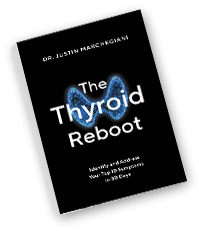
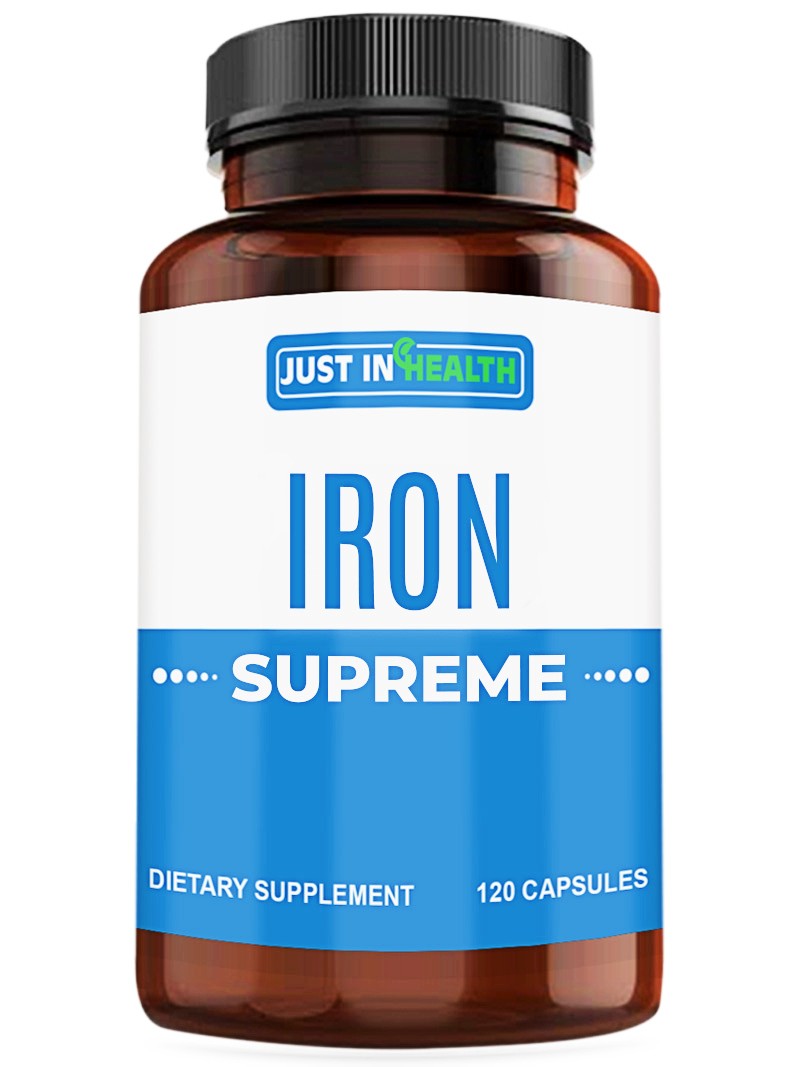
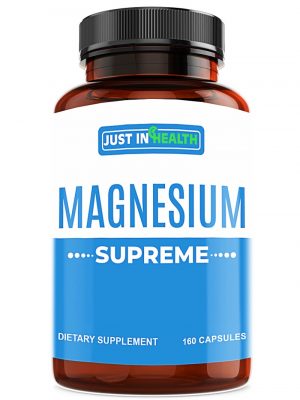
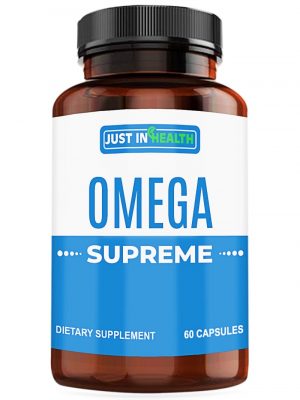
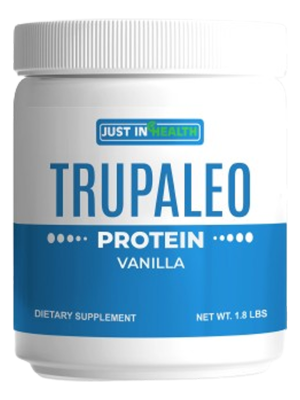
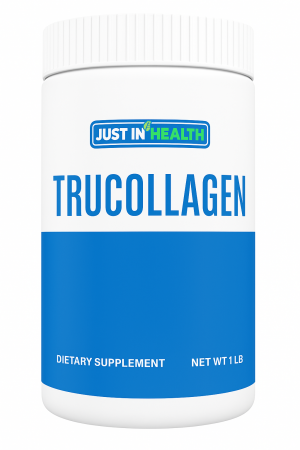
Reviews
There are no reviews yet.